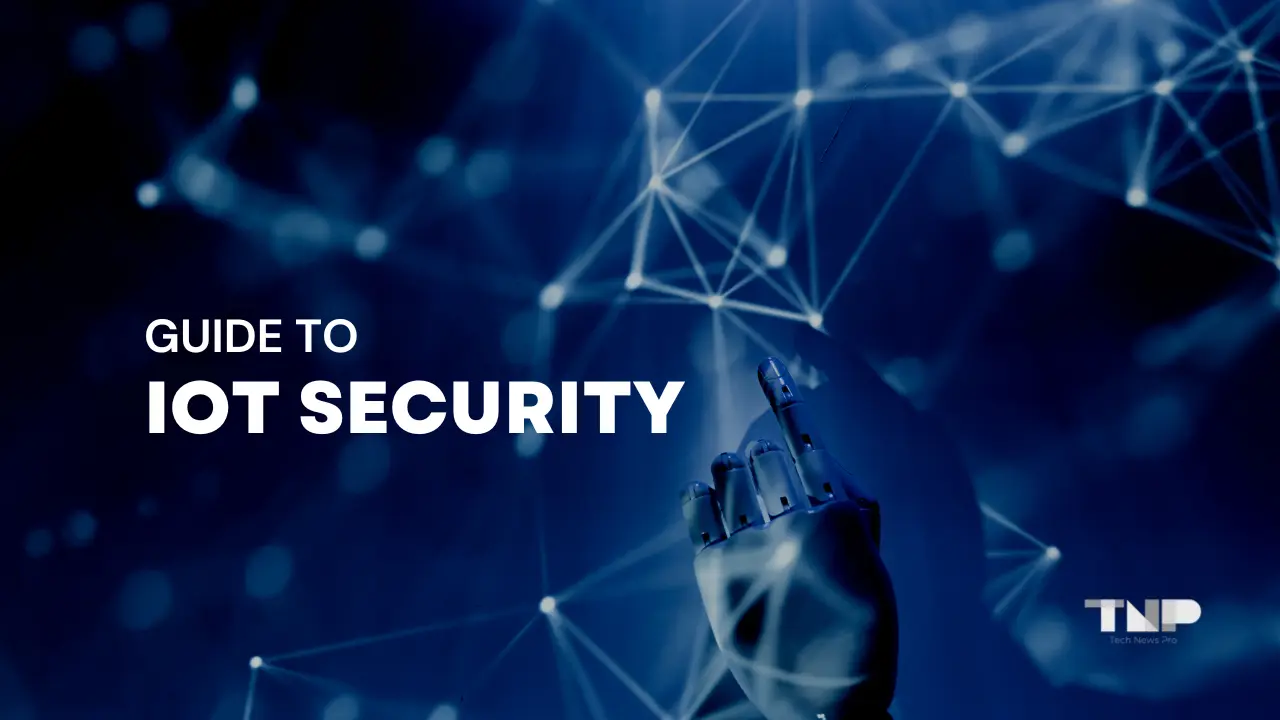Today, AI and Technology have become the backbone of Digitalization.
With large amounts of sensitive data stored online, organizations are always on the lookout for cybersecurity threats. As a result, IoT security came to the rescue.
IoT (Internet of Things) involves interconnecting computer systems and devices to the internet.
These devices or ‘things’ are embedded with sensors and software in order to be able to monitor data or share data with other devices with the use of the internet.
These devices can entail normal household items to the government or industrial devices.
By 2021, more than 11 billion devices, out of more than 20 billion devices (more than 50%) are IoT devices.
What is IoT Security?
Internet of Things Security refers to the measures being taken to safeguard and manage data stored on the internet. From mobiles to watches, most smart devices interact with the internet and other devices. As a result, IoT tools and software are used to protect these devices from getting hampered.
Why is it so important?
Over the past decade, ever since the world is transforming digitally, IoT has gained a lot of significance.
It has been integrated into almost all sectors and plays a huge role in preventing cyber threats and risks.
With all business data connected to the internet and AI taking over a huge part of the workplace, organizations are always vulnerable to threats. As a result, securing IoT has become a necessity.
In addition to this, organizations must also make sure to secure all of their networks and have needful user authentication in place.
No organization can risk data breaches or leaks which makes IoT security more important than ever.
You may have heard cases where someone’s bank account information or other personal pictures have been leaked or misused. In many cases, cybercriminals gain access to your bank account details and make unauthorized payments under your name.
We generally store a lot of sensitive information on our phones and laptops. It can be account or card details, photos, contact, or other personal information.
If not protected, any cybercriminal or hacker can hack into our accounts and access this data. This increases the significance of IoT security.
Types of IoT
There are different types of IoT applications based on their ability to connect, network, and safeguard data.
Let us take a look:
1. Commercial
These include IoT devices used in industries or commercial businesses, especially in the transportation and healthcare sectors. Some of its examples include pacemakers and other vital monitoring devices used in the healthcare industry Internet of Medical Things, IoMT).
2. Consumer Merchandise
These include IoT devices that common people buy such as smart devices (TVs, phones, watches, etc), household appliances, and virtual and voice assistants.
3. Military Technology
These include IoT devices used in the military and defense sectors such as surveillance devices, spy equipment, etc.
4. Infrastructure and Industries
These include IoT devices such as infrastructure management sensors used in infrastructures, especially while making building roads, railways, and buildings. These also include small and big industrial IoT devices such as industrial control equipment.
Which Industries need IoT Security?
Industries that need surveillance and control equipment can majorly reap the benefits of IoT security. Some are mentioned below:
1. Healthcare Industries (IoMT)
IoT equipment monitoring can be advantageous to the healthcare industry in multiple aspects.
Hospitals can equip devices that monitor a patient’s vitals such as blood pressure, heart rate, respiration rate, etc. This information can be accessed by doctors and nurses at any given time and place which makes taking care of the patient much easier.
Nowadays, we also have IoT-integrated wheelchairs through which nurses and caretakers can keep a track of the patient’s exact location. In case of emergencies, one can also track the closest accessible wheelchair in a matter of seconds.
2. Manufacturing and Production
When companies have to mass-produce, keeping track of products while maintaining large-scale production equipment can be difficult. In such a competitive market, scalability can never be compromised.
Therefore, companies can equip themselves with machines that have sensors that monitor product accuracy and immediately alerts when something is wrong to prevent any damage.
This results in optimal and large-scale production.
3. Logistics and Transport
When you order clothes from any site, you often get a link to track where your shipment is. Similarly, when products worth a lot of money are shipped, the manufacturer must keep track of whether or not the shipment reaches the appropriate hub on time.
Sometimes, these vehicles and trucks must be aware of any diversions, weather conditions, or geographical conditions beforehand in order to take the optimal route.
Any delay in deliveries is informed instantly.
When it comes to the matter of perishable products such as food, beverages, flowers, etc., vehicles must be equipped with temperature sensors and controls that can monitor and maintain optimal temperatures in order to keep the products as fresh as possible.
4. Retail Industry
When it comes to retail, IoT plays a major role in streamlining the supply chain, monitoring inventory, and improving buyer experience.
When keeping track of large stocks of inventory, shelves ate equipped with RFID sensors that keep track of the amount of inventory left (based on weight) and send out an alert when the inventory runs low.
5. Automobile Industry
You may have heard about tesla’s self-driving cars. Nowadays, cars are equipped with cameras and GPS systems through which people can go to any location through optimal routes. Vehicles are also equipped with front and back cameras that help the diver to park precisely. Vehicles are also equipped with sensors that detect any large or moving objects around the vehicle to prevent any damage.
6. Public Zones and Overall Security
In general, IoT devices are used by the public sector that is issued by the government. These devices alert in times of possible power or water outages or supply issues.
IoT is also used in mines, oil fields, constructions, etc., to ensure the safety of the worker. These IoT devices help in keeping track of the workers’ location (when going into mines or oil fields) and prevent as well as alert possible accidents.
How can you enhance IoT Security?
IoT does bring a long list of benefits, but it does come with susceptibilities.
From self-driving cars to mobile phones, any device with is connected to the internet is at a risk. As a result, it is important to be aware of such threats and take steps to keep devices secure.
Here are a few ways in which you can enhance your IoT security:
1. Track your device
First, you need to understand how your device works. Once you get an understanding of how it works, make sure to track and manage your device. Ensure that you visit only secure websites and prevent any malware or viruses from entering your device.
2. Fluctuate passwords and other credentials
Ensure to keep a difficult password. Try not to keep it simple. It should be a good mix of numbers, symbols, and letters. A difficult password is not easy to crack and as a result, keeps people from logging into your account and leaking data or any other personal information.
You can also keep changing passwords every now and then to level up your security.
3. Update your encryptions
Hackers can easily gain access to your confidential and personal information or even get access to your computer and communication networks if your data is not properly encrypted and updated.
As a result, you need to encrypt all of your data and maintain up-to-the-minute encryption code to establish high-level security.
4. MFA
Multi-factor Authentication (MFA) is a process where one has to provide two or more types of passwords or identifications to gain access to data.
This ensures that a user will only get to access the data if the authentication is verified and as a result, maintains the security of the IoT devices.
What made IoT attainable?
The concept of IoT had been around for quite some time. As the 9 to 5 workload became digitized, people felt the need not just for automation, but also for cyber security. Therefore, many believe that this is what made IoT attainable:
1. Excellent connection
Due to strong and seamless networking, it is now become immensely easy and practical to connect devices, sensors, and cloud systems to the internet making data storage and transfer effortless.
2. Cloud Computing Systems
As cloud computing systems have become highly accessible, companies, as well as users, are finding it to be one of the best approaches to securely store information with minimal management.
3. Machine learning (ML) and Data Analytics
With frequent breakthroughs being made in Machine Learning, data analytics, and big data, in addition to easy access to large amounts of information, it has enabled organizations to make judgments effortlessly.
4. Artificial Intelligence (AI)
AI brought Natural-language Processing (NPC) and voice SEO into the picture. This can be seen in digital assistants such as Apple’s Siri and Amamzon’s Alexa. This integration made it more attractive and feasible to users.
5. Cost-effective
With the ever-increasing advances and breakthroughs in IoT, it has become much more cost-effective. IoT devices are now used in daily home appliances, smartphones, watches, and even in automobiles.
Wrapping it up
IoT is revolutionizing the digital world. It is no longer a trend and has become a necessity for organizations to protect data. Its dynamic features and characteristic has made it possible to be integrated across almost all industries.
Even though it has its challenges, organizations are willing to invest considerable amounts of capital to ensure data safety and safeguard themselves from possible cyber attacks and risks.
According to a report by Dell Technologies, with the recent advancements and progress on the technological front, IoT has the ability to have a strong impact on our daily life, workplace, and overall society.
- A complex password
- Document and file back-ups
- Updated encryptions
- Multi-factor Authentication
- Regular virus and malware scans
- Informing employees about security protocols and providing adequate training regarding the same
- The zero-trust policy (Not sharing passwords or sensitive information with any employee, including managers or any other colleague)
- Updating computer systems and software regularly
- Keeping a backup of any sensitive documentation
- Build a strong firewall
- Regularly changing passwords and authentications
- Inadequacies in uniformity
- Vulnerable authentication (traditional two-factor authentication)
- Lack of software security
- Inadequate network security
- Insufficient data security
- Complications in identifying possible threats








